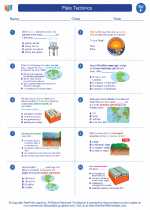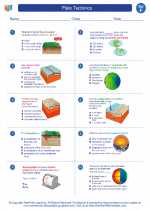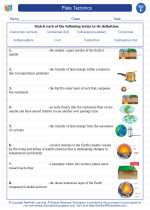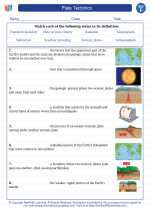Earth's Core
The Earth's core is the innermost part of our planet. It is divided into two main parts: the inner core and the outer core. Understanding the Earth's core is crucial for understanding the Earth's magnetic field, geological processes, and the formation of the planet.
Inner Core
The inner core is a solid sphere made primarily of iron and nickel. It has a radius of about 1,220 kilometers (760 miles). The immense pressure at the center of the Earth keeps the inner core solid, despite the high temperatures. The temperature of the inner core is estimated to be around 5,700 degrees Celsius (10,300 degrees Fahrenheit).
Outer Core
The outer core is a layer of molten iron and nickel that surrounds the inner core. It is about 2,300 kilometers (1,430 miles) thick. The flow of the molten outer core is thought to be responsible for generating the Earth's magnetic field through the dynamo effect.
Importance of the Earth's Core
Studying the Earth's core is essential for understanding the processes that drive the Earth's magnetic field and how the Earth's interior influences the surface. It also provides insights into the formation and evolution of Earth as a planet.
Study Guide
- What are the two main parts of the Earth's core?
Answer: The inner core and the outer core. - What are the primary elements that make up the inner core?
Answer: Iron and nickel. - What is the state of matter of the inner core?
Answer: Solid. - What is the temperature of the inner core?
Answer: Around 5,700 degrees Celsius (10,300 degrees Fahrenheit). - What is the outer core made of?
Answer: Molten iron and nickel. - What is the thickness of the outer core?
Answer: About 2,300 kilometers (1,430 miles). - What is the outer core responsible for generating?
Answer: The Earth's magnetic field through the dynamo effect. - Why is studying the Earth's core important?
Answer: It helps in understanding the Earth's magnetic field, geological processes, and the formation of the planet.
[Earth's Core] Related Worksheets and Study Guides:
.◂Science Worksheets and Study Guides Sixth Grade. Plate Tectonics

 Worksheet/Answer key
Worksheet/Answer key
 Worksheet/Answer key
Worksheet/Answer key
 Vocabulary/Answer key
Vocabulary/Answer key
 Vocabulary/Answer key
Vocabulary/Answer key
 Vocabulary/Answer key
Vocabulary/Answer key
 Vocabulary/Answer key
Vocabulary/Answer key
